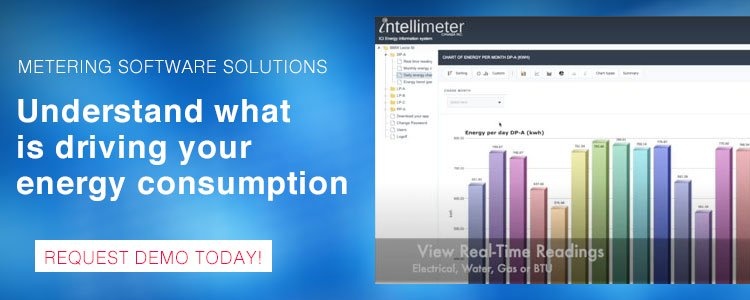Generally, the submetering cost-benefit calculus is similar to many building retrofits, with up-front costs followed by long-term value and operational benefits. The capabilities and costs of meter systems can vary widely which also make it a complex decision.
Metering systems require adequate specification by electrical and mechanical engineers and require to be installed by qualified technicians. The submetering system must include all the accessories and associated devices like displays, Data Collection Units, Communication Gateways for proper functioning; That is the first up-front or capital cost.
Then comes the operational portions which also demands additional human resources to manage and report. In this portion the costs for software, and network access fees or telecommunication for data collection and analysis have to be included; All of this adds up as continuous operational expenses.
Now, for submetering to be useful, the data has to be collected from each and every device and analyzed with the right tools to provide insight into the building’s operation— or to bill individual unit owners or tenants to recover the costs of water or energy consumed in each unit. The reader may be surprised to know that there are many buildings with submeters that while operational are not used at all.
Only, if the data obtained from submetering is used; benefits can be derived from the total investment. Owners and managers should look for experienced engineers that can specify a complete system, both the mechanical meters for thermal energy, water, gas and the electrical meters to report in a single platform or to integrate with the Building Automation System seamlessly, and be part of the selection of experienced installers, Working with a knowledgeable partner, with a solid engineering and field service team is also ideal for a successful implementation.
Despite all these challenges and costs, it has been demonstrated that building owners and managers can reap the many financial and intangible benefits from submetering.
Government Grants or Incentives
In order to incentivize the implementation of sub-metering in buildings, governements and utilities participate in the distribution of grants, incentives and tax reductions to offset the cost of submetering, particularly when tied to energy or water conservation targets. Typically, in most utility driven programs, the full benefit can only be obtained when there is measurement of the reduction. These grants & incentives add to the financial benefit of the resource conservation, therefore accelerating the Return On Investment (ROI).
Economic Considerations
Submetering is beneficial for the Tenants which now have visibility to their individual consumption a practice that drives conservation. Also for landlords that can have certainty on their income when the utilities are separated from the rent.
Without successful conservation measures to prevent tenants’ uncontrolled energy or water use, building owners pay higher utility bills and may be required to invest in costly capacity-extending improvements such as big electrical riser systems, that distribute electricity through the building.
A good use of a submetering system assists in monitoring the building equipemnt
performance; operational changes through intelligent controls that automatically adjust to environmental requirements are correclty monitored. These strategies can save building owners time and money while also improving the tenants experience.
Other intangible benefits are the attraction to better quality tenants when the units are submetered, and the increased valuation of properties when they are submetered, and of course the environmental impact of reduced resource consumption.


